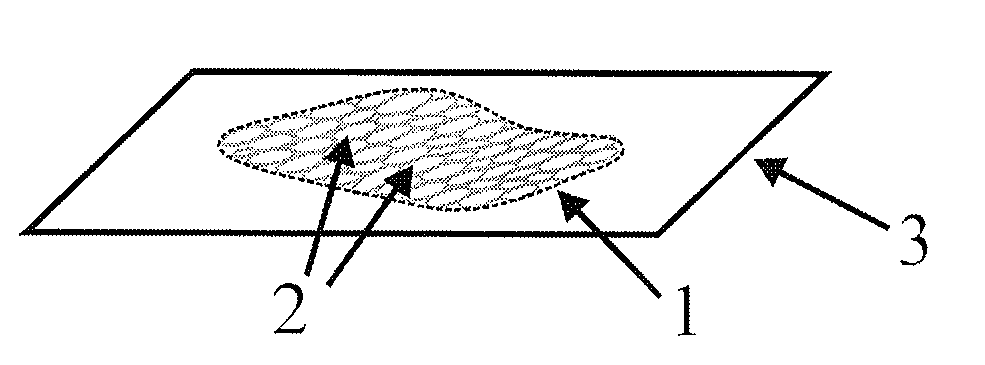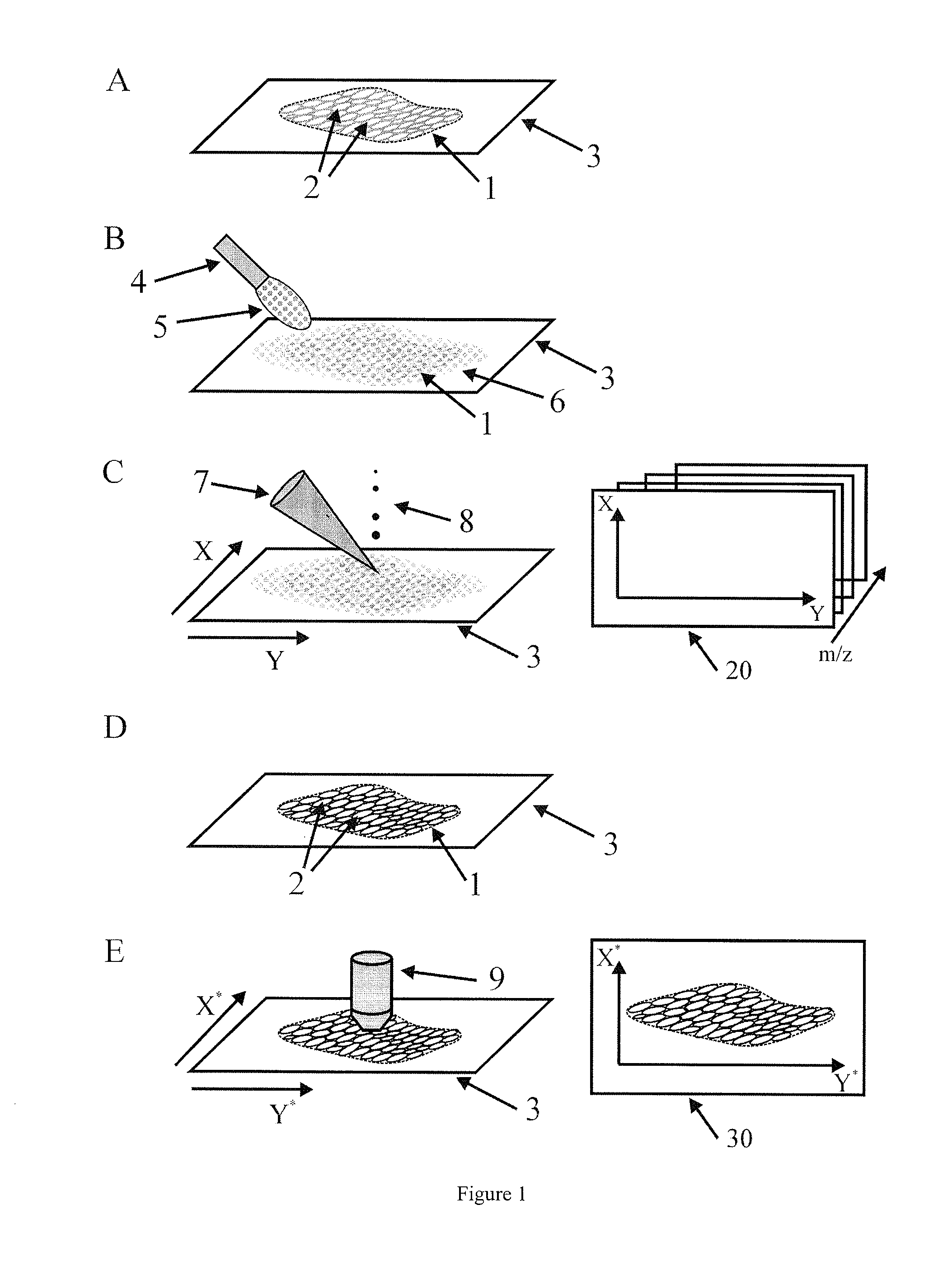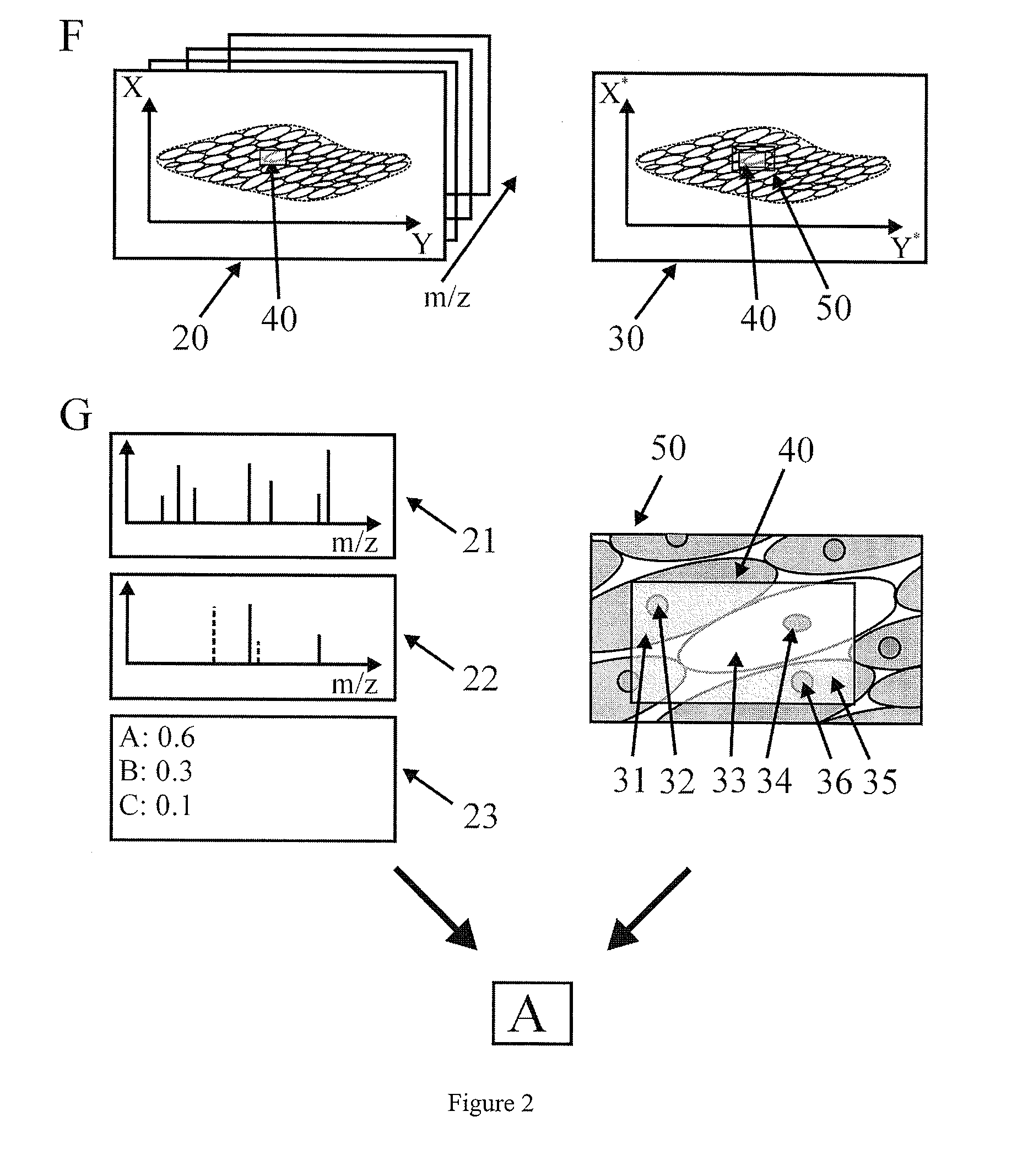Method for the analysis of tissue sections
a tissue section and analysis method technology, applied in the field of histologic classification of tissue sections, can solve the problem of not being able to achieve a classification of sufficient quality withou
- Summary
- Abstract
- Description
- Claims
- Application Information
AI Technical Summary
Benefits of technology
Problems solved by technology
Method used
Image
Examples
Embodiment Construction
[0028]FIGS. 1 and 2 comprise steps A to G and show a preferred method for histologic classification of a tissue section.
[0029]In Step A, a tissue section 1 some ten micrometers thick is provided on a specimen slide 3. This involves first freezing a tissue sample to stabilize it before cutting it with a microtome.
[0030]In Step B, a matrix layer 6 is applied to the tissue section 1. A device 4 uses vibrations to produce a mist 5 of small droplets from a dissolved matrix substance; these droplets deposit on the tissue section 1 and start to dry. Such a device is disclosed in published U.S. patent application 2007 / 0278400, which is hereby incorporated by reference. Nebulization and subsequent partial drying of the matrix droplets on the tissue section 1 are repeated cyclically until the matrix layer 6 is in an optimum state for an imaging mass spectrometric analysis.
[0031]Step C involves taking a mass spectrometric image 20 of the tissue section 1 prepared in Step B. The tissue section ...
PUM
 Login to View More
Login to View More Abstract
Description
Claims
Application Information
 Login to View More
Login to View More - R&D
- Intellectual Property
- Life Sciences
- Materials
- Tech Scout
- Unparalleled Data Quality
- Higher Quality Content
- 60% Fewer Hallucinations
Browse by: Latest US Patents, China's latest patents, Technical Efficacy Thesaurus, Application Domain, Technology Topic, Popular Technical Reports.
© 2025 PatSnap. All rights reserved.Legal|Privacy policy|Modern Slavery Act Transparency Statement|Sitemap|About US| Contact US: help@patsnap.com



